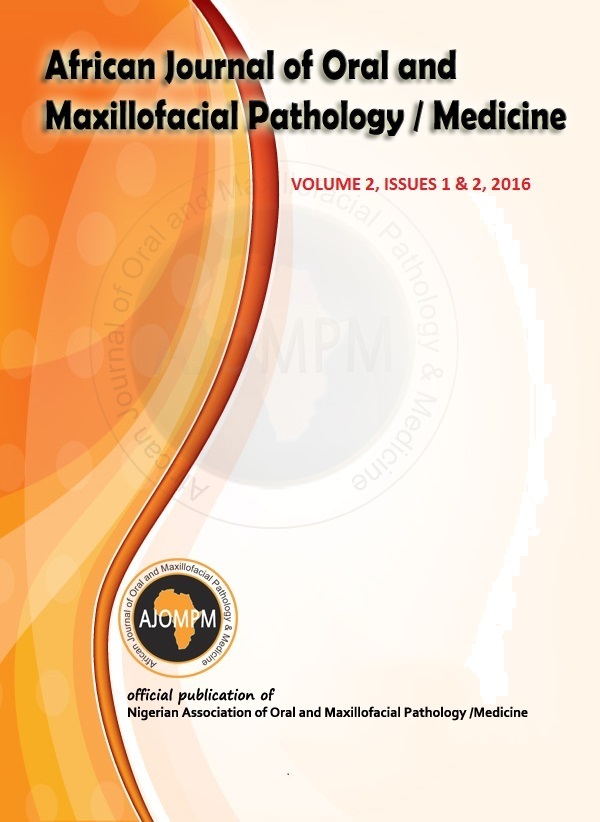EFFECTIVENESS OF NON SURGICAL THERAPY ON PERIODONTAL POCKETS IN PATIENTS WITH MODERATE CHRONIC PERIODONTITIS SEEN AT THE UNIVERSITY OF GHANA DENTAL SCHOOL CLINIC
Keywords:
Periodontitis, Non-surgical therapy, GhanaAbstract
BACKGROUND: One of the sequelae of periodontal disease is
pocket formation. The extent of therapy to eradicate the disease
depends on the severity of the disease. Treatment can be achieved
by either non-surgical or surgical therapy. Non-surgical therapy is
normally instituted first and depending on outcome, a surgical
therapy can be planned for.
OBJECTIVE: The aim of this study was to determine the
effectiveness of non-surgical periodontal therapy on pocket
reduction in Ghanaian patients with moderate chronic periodontitis.
METHODS: The study was interventional, spanning a period of 5
months for each patient. Twenty (20) patients with pocket depth 5 –
7 mm between the ages of 30 – 81 years were treated using hand
and ultrasonic instrumentation at the University of Ghana Dental
School clinic (UGDS). Periodontal parameters measured include
plaque scores, bleeding on probing (BOP) scores, probing pocket
depth (PPD), probing attachment level (PAL) and gingival
recession. Significance level was set at 0.05.
RESULTS: Patients with a mean PPD of 5.5mm at baseline was
reduced to 3.5 mm at the end of the period and the mean PAL of
3.1mm reduced to 1.7 mm. The reductions were significant. Plaque
scores and BOP scores were also significantly reduced. Recession
recorded a mean increase which was insignificant.
CONCLUSIONS: Probing pocket depth 5 – 7 mm can be reduced
significantly by a mean of 2mm in Ghanaian patients with chronic
periodontitis, using oral hygiene measures, scaling and root
planning.

